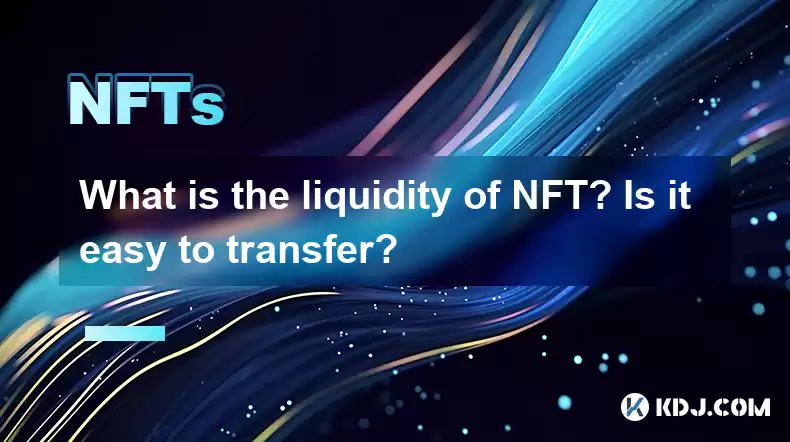-
 Bitcoin
Bitcoin $114000
0.76% -
 Ethereum
Ethereum $3488
0.53% -
 XRP
XRP $2.908
2.27% -
 Tether USDt
Tether USDt $1.000
0.05% -
 BNB
BNB $750.3
0.39% -
 Solana
Solana $161.9
0.14% -
 USDC
USDC $1.000
0.03% -
 TRON
TRON $0.3258
1.22% -
 Dogecoin
Dogecoin $0.1991
1.38% -
 Cardano
Cardano $0.7260
3.39% -
 Hyperliquid
Hyperliquid $38.20
2.33% -
 Stellar
Stellar $0.3987
7.33% -
 Sui
Sui $3.414
1.17% -
 Chainlink
Chainlink $16.28
2.52% -
 Bitcoin Cash
Bitcoin Cash $542.2
2.07% -
 Hedera
Hedera $0.2489
7.51% -
 Ethena USDe
Ethena USDe $1.001
0.05% -
 Avalanche
Avalanche $21.40
0.70% -
 Toncoin
Toncoin $3.635
0.75% -
 Litecoin
Litecoin $109.8
2.04% -
 UNUS SED LEO
UNUS SED LEO $8.955
-0.02% -
 Shiba Inu
Shiba Inu $0.00001221
2.44% -
 Uniswap
Uniswap $9.152
2.20% -
 Polkadot
Polkadot $3.588
2.09% -
 Monero
Monero $298.1
1.27% -
 Dai
Dai $1.000
0.01% -
 Bitget Token
Bitget Token $4.326
1.28% -
 Pepe
Pepe $0.00001045
1.96% -
 Cronos
Cronos $0.1330
4.27% -
 Aave
Aave $257.9
2.12%
What is the liquidity of NFT? Is it easy to transfer?
Liquidity of NFTs depends on factors like popularity, platform, and market demand; transferring them involves wallet connection, transaction initiation, and blockchain confirmation.
Apr 27, 2025 at 09:00 pm

The concept of liquidity in the context of Non-Fungible Tokens (NFTs) is a critical aspect that potential buyers and sellers must understand. Liquidity refers to how easily an asset can be bought or sold in the market without affecting its price. In the world of NFTs, liquidity is influenced by several factors, including the popularity of the NFT, the platform on which it is listed, and the overall market demand for similar assets.
When discussing the liquidity of NFTs, it's important to consider that these tokens are unique and not interchangeable, unlike cryptocurrencies such as Bitcoin or Ethereum. This uniqueness can lead to lower liquidity compared to fungible tokens. For instance, if an NFT is part of a highly sought-after collection, it may have higher liquidity due to increased demand. Conversely, an NFT from a lesser-known artist or project might struggle to find buyers, resulting in lower liquidity.
The ease of transferring NFTs is another crucial aspect to explore. Transferring NFTs involves several steps and can vary depending on the platform used. Generally, the process involves connecting a digital wallet, initiating the transfer, and confirming the transaction on the blockchain. Here's a detailed look at how to transfer an NFT:
- Connect your digital wallet: To transfer an NFT, you need to connect your digital wallet to the platform where the NFT is listed. Popular wallets include MetaMask, Trust Wallet, and Coinbase Wallet.
- Select the NFT to transfer: Navigate to your NFT collection on the platform and select the specific NFT you wish to transfer.
- Initiate the transfer: Click on the transfer or send option, and enter the recipient's wallet address. Double-check the address to avoid errors.
- Confirm the transaction: The platform will prompt you to confirm the transaction. This step usually involves paying a gas fee, which is necessary to process the transaction on the blockchain.
- Wait for confirmation: Once you confirm the transaction, it will be processed on the blockchain. The time it takes can vary depending on network congestion.
Factors Affecting NFT Liquidity
Several factors can influence the liquidity of an NFT. Market demand is a primary driver; if there is high demand for a particular type of NFT, it will generally be more liquid. For example, NFTs from popular collections like CryptoPunks or Bored Ape Yacht Club tend to have higher liquidity due to their widespread recognition and demand.
Platform popularity also plays a significant role. Platforms like OpenSea, Rarible, and Foundation have large user bases, which can increase the liquidity of NFTs listed on these sites. Conversely, NFTs listed on smaller or less popular platforms may have lower liquidity due to fewer potential buyers.
The rarity and uniqueness of an NFT can also impact its liquidity. Rare NFTs, such as those with unique traits or limited editions, may attract more buyers and thus have higher liquidity. However, if an NFT is too unique, it might be challenging to find a buyer willing to pay the desired price, leading to lower liquidity.
Challenges in NFT Liquidity
One of the main challenges in NFT liquidity is the volatility of the market. The NFT market can experience rapid fluctuations in demand and price, which can affect the ease of buying and selling these assets. For instance, during periods of high market interest, NFTs may be more liquid, but during downturns, liquidity can dry up quickly.
Another challenge is the fragmentation of the NFT market. With numerous platforms and marketplaces, it can be difficult for buyers to find specific NFTs, and for sellers to reach a broad audience. This fragmentation can lead to lower liquidity as it becomes harder to match buyers and sellers.
Regulatory uncertainty also poses a challenge to NFT liquidity. As governments and regulatory bodies around the world grapple with how to classify and regulate NFTs, potential buyers and sellers may be hesitant to engage in the market, leading to reduced liquidity.
Improving NFT Liquidity
To improve the liquidity of NFTs, several strategies can be employed. Increasing market awareness and education about NFTs can help attract more buyers and sellers to the market. This can be achieved through marketing efforts, educational content, and community engagement.
Enhancing platform interoperability can also boost liquidity. If NFTs can be easily transferred between different platforms, it can increase the pool of potential buyers and sellers, thereby improving liquidity. Some platforms are already working on solutions to enable cross-platform trading.
Creating liquidity pools is another approach to improving NFT liquidity. These pools can provide a mechanism for buyers and sellers to trade NFTs more efficiently, similar to how liquidity pools work in decentralized finance (DeFi) for cryptocurrencies.
Transferring NFTs: A Detailed Guide
Transferring NFTs can be a straightforward process if you follow the right steps. Here's a more detailed guide on how to transfer an NFT:
- Choose the right platform: Ensure that the platform you are using supports the transfer of NFTs. Popular platforms like OpenSea and Rarible allow for easy transfers.
- Connect your wallet: Open the platform and connect your digital wallet. Make sure your wallet is funded with enough cryptocurrency to cover the gas fees.
- Navigate to your NFT collection: Once logged in, go to your NFT collection and find the NFT you want to transfer.
- Initiate the transfer: Click on the NFT and select the option to transfer or send. Enter the recipient's wallet address carefully.
- Review and confirm: The platform will show you a summary of the transaction. Review the details, including the recipient's address and the gas fee, and confirm the transaction.
- Wait for blockchain confirmation: After confirming, the transaction will be processed on the blockchain. You can track the progress using a blockchain explorer.
Frequently Asked Questions
Q: Can I transfer an NFT to someone who doesn't have a digital wallet?
A: No, to receive an NFT, the recipient must have a compatible digital wallet. They will need to set up a wallet and provide you with their wallet address before you can transfer the NFT.
Q: Are there any fees associated with transferring NFTs?
A: Yes, transferring NFTs typically involves paying a gas fee, which is a transaction fee required to process the transfer on the blockchain. The amount of the fee can vary depending on the network congestion and the blockchain used.
Q: Can I transfer an NFT between different blockchain networks?
A: Transferring NFTs between different blockchain networks can be challenging and is not always supported. Some platforms and services are working on solutions for cross-chain transfers, but currently, most NFTs are confined to their native blockchain.
Q: How can I increase the liquidity of my NFT?
A: To increase the liquidity of your NFT, you can list it on popular platforms, engage with the community to raise awareness, and consider setting a competitive price. Additionally, participating in liquidity pools or auctions can help attract more potential buyers.
Disclaimer:info@kdj.com
The information provided is not trading advice. kdj.com does not assume any responsibility for any investments made based on the information provided in this article. Cryptocurrencies are highly volatile and it is highly recommended that you invest with caution after thorough research!
If you believe that the content used on this website infringes your copyright, please contact us immediately (info@kdj.com) and we will delete it promptly.
- XRP: Crypto Analyst's Smartest Buy in 2025?
- 2025-08-04 00:30:13
- SEC, Crypto Regulation, and Digital Assets: A New Era?
- 2025-08-04 00:30:13
- Navigating the Meme Coin Mania: Cold Wallets, SHIB, and DOGE in 2025
- 2025-08-03 22:30:16
- Bitcoin's Price Fall and Scrutiny: What's a New Yorker to Think?
- 2025-08-03 22:30:16
- Shiba Inu's Resistance and Recovery Push: What's Next for SHIB?
- 2025-08-03 22:50:16
- Bitcoin, Hashcash, and Crypto Innovation: A Look at the Foundation and Future
- 2025-08-03 23:12:53
Related knowledge

Is it possible to get a refund on an NFT?
Jul 21,2025 at 08:35pm
Understanding NFT Transactions and RefundsWhen you purchase an NFT (Non-Fungible Token), the transaction is typically recorded on a blockchain, making...

What happens to NFTs when the owner dies?
Jul 22,2025 at 02:43pm
Legal Ownership and Digital AssetsWhen an individual owns NFTs, the question of what happens to these assets upon their death is a pressing one. NFTs ...

What are the tax implications of gifting an NFT?
Jul 19,2025 at 04:21am
Understanding the Basics of NFT GiftingGifting a Non-Fungible Token (NFT) involves transferring ownership from one individual to another without recei...

Can you trade NFTs on your phone?
Jul 18,2025 at 04:29am
Trading NFTs on Mobile DevicesYes, you can trade NFTs on your phone, and the process has become increasingly streamlined thanks to a variety of mobile...

How to find out about upcoming NFT mints?
Jul 18,2025 at 11:50am
Exploring NFT Minting OpportunitiesUnderstanding the landscape of upcoming NFT mints is crucial for collectors, investors, and creators who wish to st...

What is an allowlist or whitelist for an NFT mint?
Jul 20,2025 at 07:14pm
Understanding the Concept of an Allowlist for NFT MintingAn allowlist, also commonly referred to as a whitelist, is a mechanism used in the NFT mintin...

Is it possible to get a refund on an NFT?
Jul 21,2025 at 08:35pm
Understanding NFT Transactions and RefundsWhen you purchase an NFT (Non-Fungible Token), the transaction is typically recorded on a blockchain, making...

What happens to NFTs when the owner dies?
Jul 22,2025 at 02:43pm
Legal Ownership and Digital AssetsWhen an individual owns NFTs, the question of what happens to these assets upon their death is a pressing one. NFTs ...

What are the tax implications of gifting an NFT?
Jul 19,2025 at 04:21am
Understanding the Basics of NFT GiftingGifting a Non-Fungible Token (NFT) involves transferring ownership from one individual to another without recei...

Can you trade NFTs on your phone?
Jul 18,2025 at 04:29am
Trading NFTs on Mobile DevicesYes, you can trade NFTs on your phone, and the process has become increasingly streamlined thanks to a variety of mobile...

How to find out about upcoming NFT mints?
Jul 18,2025 at 11:50am
Exploring NFT Minting OpportunitiesUnderstanding the landscape of upcoming NFT mints is crucial for collectors, investors, and creators who wish to st...

What is an allowlist or whitelist for an NFT mint?
Jul 20,2025 at 07:14pm
Understanding the Concept of an Allowlist for NFT MintingAn allowlist, also commonly referred to as a whitelist, is a mechanism used in the NFT mintin...
See all articles

























































































